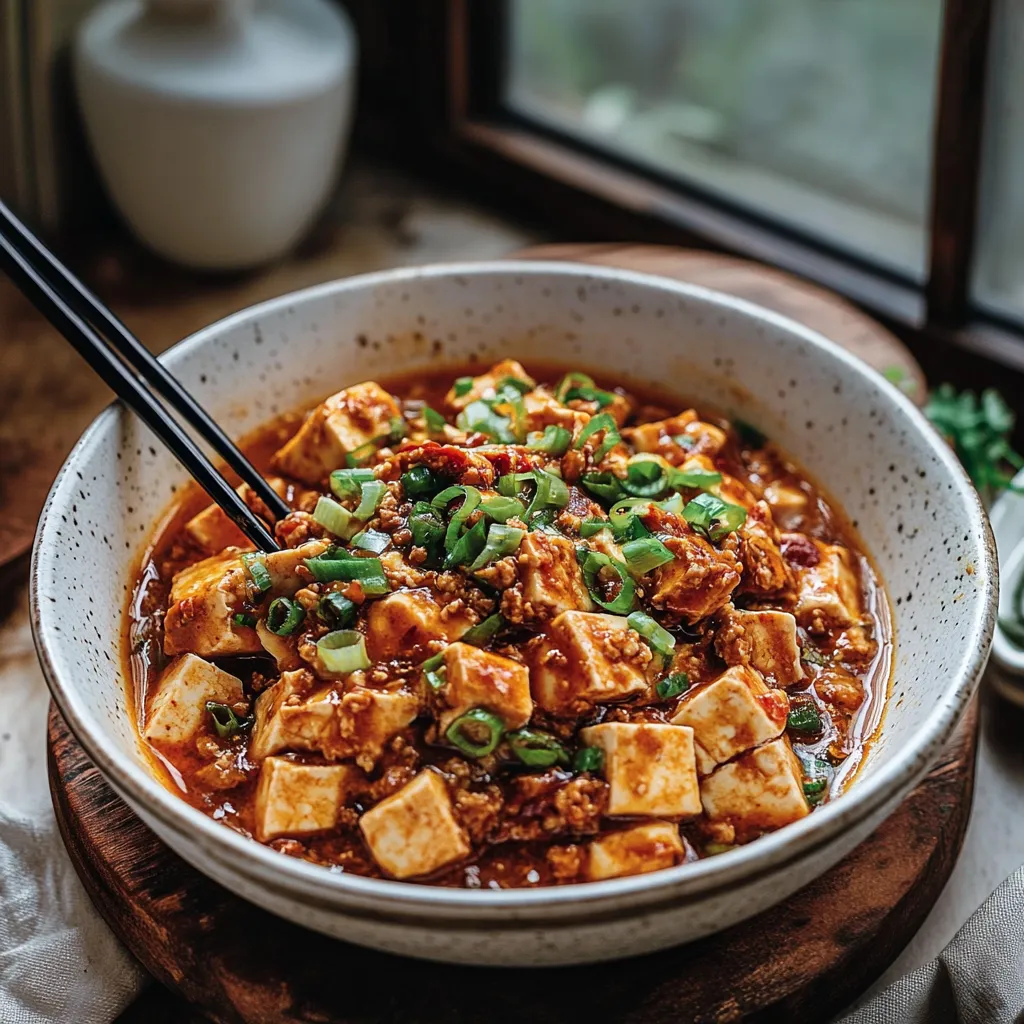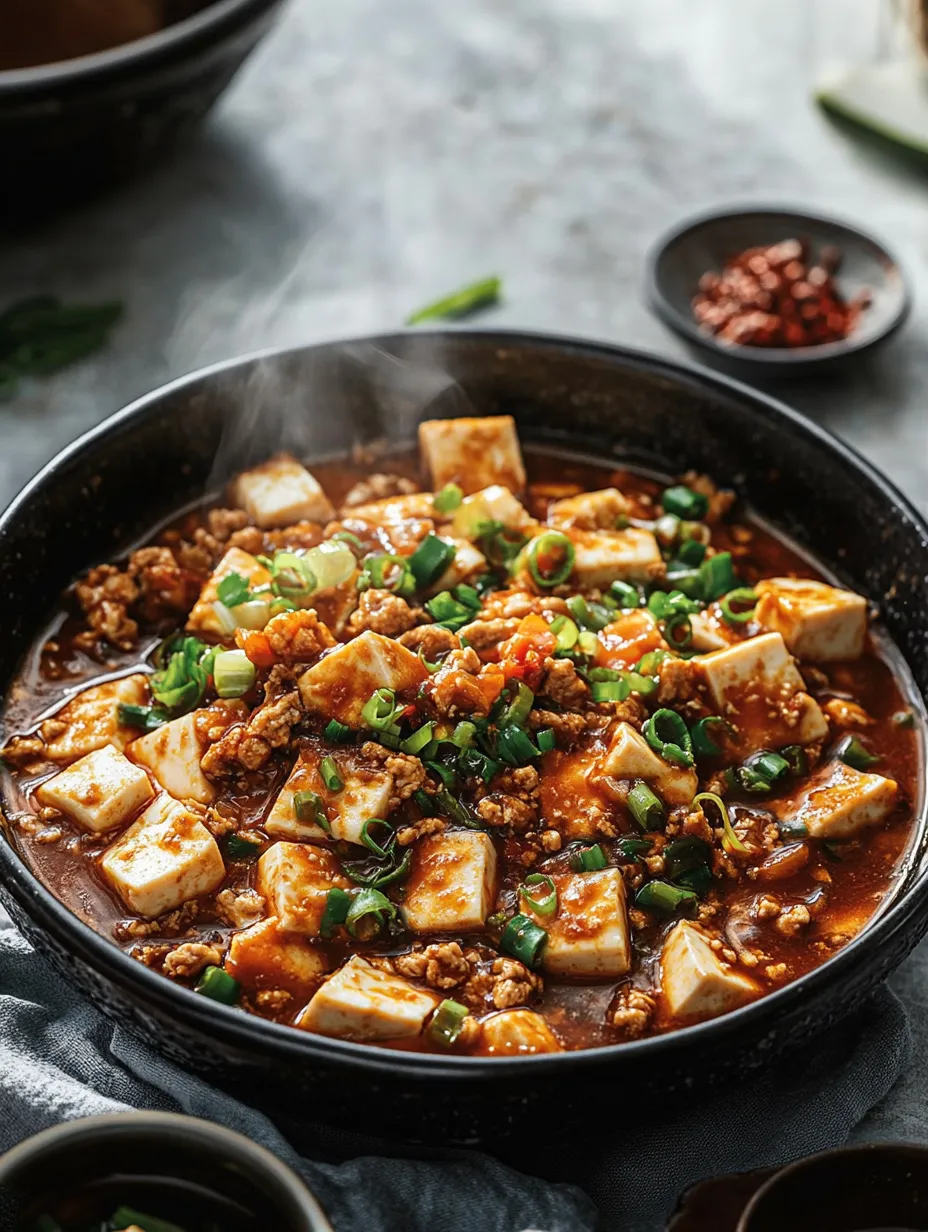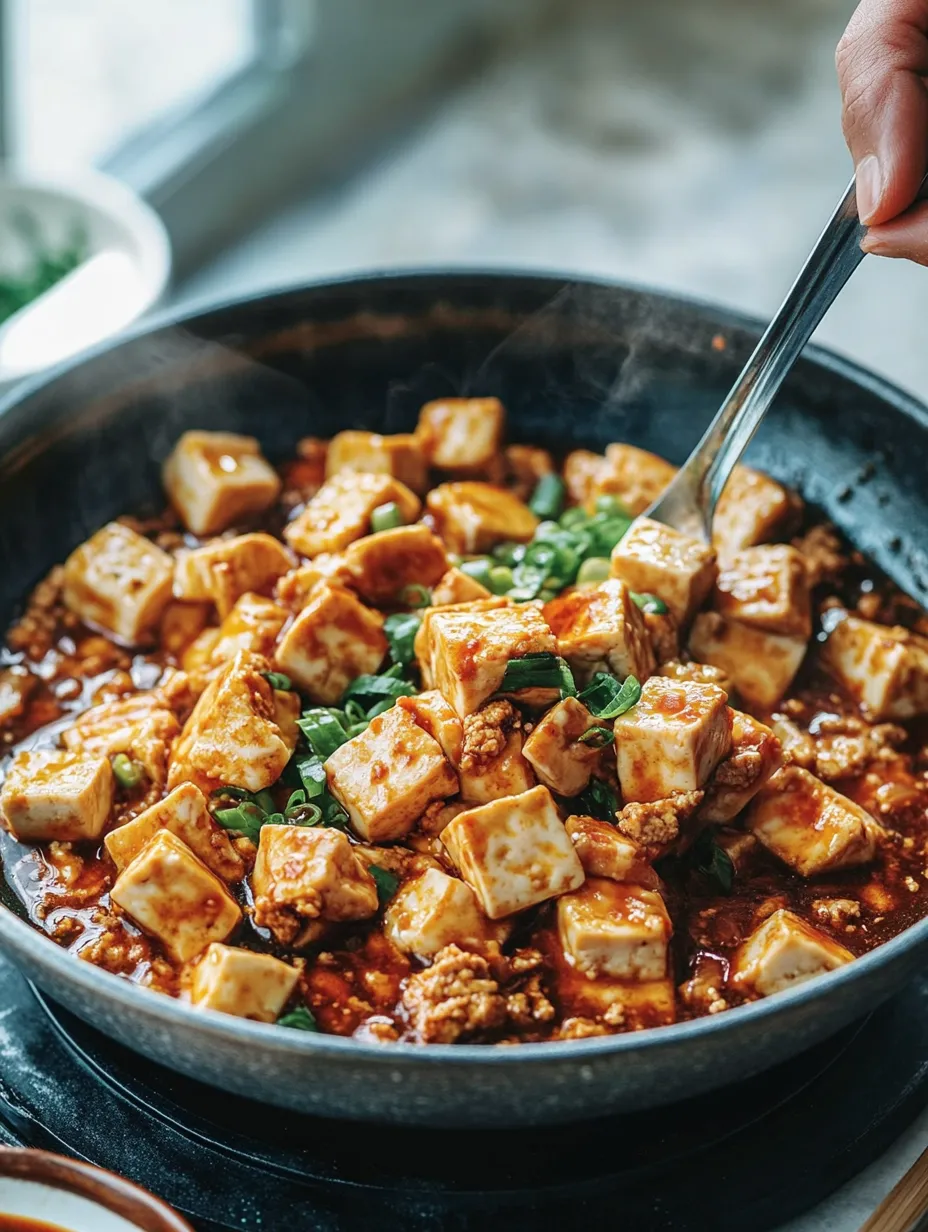 Pin it
Pin it
This authentic Mapo Tofu recipe brings the bold flavors of Sichuan cuisine right to your home kitchen. The silky soft tofu cubes bathe in a rich, spicy sauce with fragrant Sichuan peppercorns and savory ground pork, creating a dish that perfectly balances heat, numbing sensation, and umami depth.
I first learned this recipe during my travels to Chengdu where I spent afternoons in the kitchen of a local grandmother. She taught me that the secret lies in properly toasting the Sichuan peppercorns until fragrant and carefully handling the tofu to maintain its delicate texture.
Ingredients
- Ground pork: Adds richness and texture to the sauce. Quality matters here so choose at least 15% fat content for best flavor
- Shaoxing wine: The secret flavor booster that adds complexity. Look for bottles labeled pure without salt added
- Doubanjiang: Fermented broad bean paste that creates the signature flavor. The aged variety with visible oil on top indicates better quality
- Sichuan peppercorns: The essential numbing component. Look for ones that smell fresh and citrusy not stale
- Tofu: Choose medium or firm tofu for the perfect balance of texture that holds shape while absorbing flavors
- Chili oil: Adds the signature red hue and extra layer of spice. Homemade is best but a quality store bought works well
- Five spice powder: A small amount adds wonderful aromatic depth. Look for freshly ground varieties for maximum impact
Step-by-Step Instructions
- Marinate the Meat:
- Combine ground pork with Shaoxing wine, soy sauce, and ginger in a bowl and mix well. This step seasons the meat while enhancing its natural flavors and reducing any gaminess. Let sit for at least 5 minutes while preparing other ingredients for maximum flavor absorption.
- Toast the Sichuan Peppercorns:
- Heat oil and peppercorns in a large nonstick skillet over medium high heat until they turn dark brown and crispy. Watch carefully as they can burn quickly. This process releases their essential oils and creates that signature numbing effect. Remove with a slotted spoon and set aside.
- Create the Flavor Base:
- Add the marinated meat and Doubanjiang to the flavored oil. Break the meat into small pieces while cooking over medium heat, ensuring each bit gets coated with the spicy bean paste. The meat should be fully cooked through but not overly browned about 3 minutes. Add the green onions and stir fry briefly to release their aroma.
- Introduce the Tofu:
- Carefully place the cubed tofu on top of the meat mixture without stirring. This gentle approach prevents breaking the delicate tofu pieces. Pour in the chicken stock, add chili oil, five spice powder and sugar. The liquid will help distribute flavors without needing to stir.
- Braise to Perfection:
- Cover and simmer on medium low heat for 8 to 10 minutes. This slow cooking allows the tofu to absorb the rich flavors of the sauce while maintaining its texture. The sauce will reduce by half, concentrating the flavors. Taste and adjust seasonings if needed.
- Thicken the Sauce:
- Stir the cornstarch slurry and swirl it into the pan. Gently stir a few times until the sauce thickens to a silky consistency that will coat the back of a spoon. This step creates the perfect sauce thickness that clings to both the tofu and rice when served.
 Pin it
Pin it
Doubanjiang is truly the soul of this dish. The first time I used authentic Pixian doubanjiang brought back from Sichuan province, my family was astonished by the depth of flavor. My daughter who normally avoids spicy food kept returning for more despite the heat claiming it tasted completely different from any Chinese food she had tried before.
Spice Level Customization
Mapo tofu traditionally packs significant heat, but this recipe is surprisingly adaptable to different spice preferences. For milder versions, reduce the Doubanjiang to 1 tablespoon and omit the chili oil completely. The dish will still carry wonderful flavor without overwhelming heat. For spice lovers, increase Doubanjiang to 4 tablespoons and double the chili oil. Remember that Sichuan peppercorns contribute numbing sensation rather than heat, so adjust those based on how much of that tingling feeling you enjoy.
Storage and Leftovers
This dish actually improves overnight as the flavors meld together in the refrigerator. Store leftovers in an airtight container for up to 3 days. When reheating, add a small splash of water or broth since the sauce thickens considerably when chilled. Heat gently over medium low heat or microwave at 70% power to prevent the tofu from becoming tough. Freezing is not recommended as the texture of tofu changes significantly when frozen and thawed.
 Pin it
Pin it
The Cultural Significance
Mapo tofu originated in Chengdu, Sichuan province during the Qing Dynasty. The name translates to "pockmarked grandmother's tofu," named after the elderly woman who created the dish at her humble restaurant. Originally a peasant dish making use of affordable ingredients, it has become one of the most globally recognized Sichuan dishes. The balance of ma (numbing) and la (spicy) sensations exemplifies the sophisticated flavor principles of Sichuan cuisine that have earned it worldwide acclaim.
Frequently Asked Questions
- → How do I make the dish less spicy?
To reduce spiciness, use less Doubanjiang and chili oil. You can also balance the heat by adding a little more sugar to the sauce.
- → Can I make this dish vegetarian?
Yes, you can skip the meat and use mushrooms (such as shiitake mushrooms) to enhance the flavor for a vegetarian version of Mapo Tofu.
- → What type of tofu is best for Mapo Tofu?
Firm or medium-firm tofu is ideal for this dish, as it holds its shape during cooking and absorbs the flavorful sauce without breaking apart.
- → Can I adjust the numbing flavor from the Sichuan peppercorns?
Yes, adjust the amount of Sichuan peppercorns based on your preference. Use less for a milder flavor or more for a stronger numbing sensation.
- → What can I use instead of Shaoxing wine?
If you don’t have Shaoxing wine, you can substitute it with dry sherry or omit it altogether if needed.
